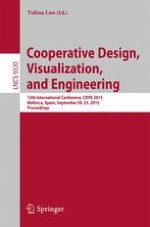This book constitutes the refereed proceedings of the 12th International Conference on Cooperative Design, Visualization, and Engineering, CDVE 2015, held in Mallorca, Spain, in September 2015.
The 30 full papers presented together with 4 short papers were carefully reviewed and selected from numerous submissions. There is a group of papers dressing the big data related to the cooperative work. It includes the information modeling, intensive task management, how to use the cloud technology to foster the cooperation etc. To deal with the social network issues is the topic of another group of papers in this volume. They range from creating programming languages to automate cooperative processes, social network information visualization, and the ranking cooperative research teams by analyzing the social network data.
